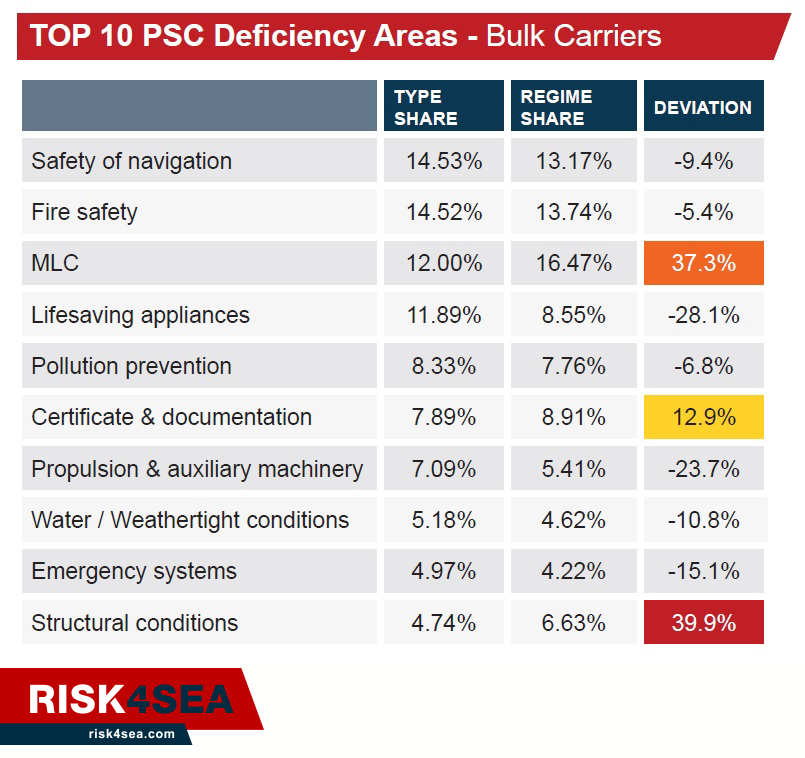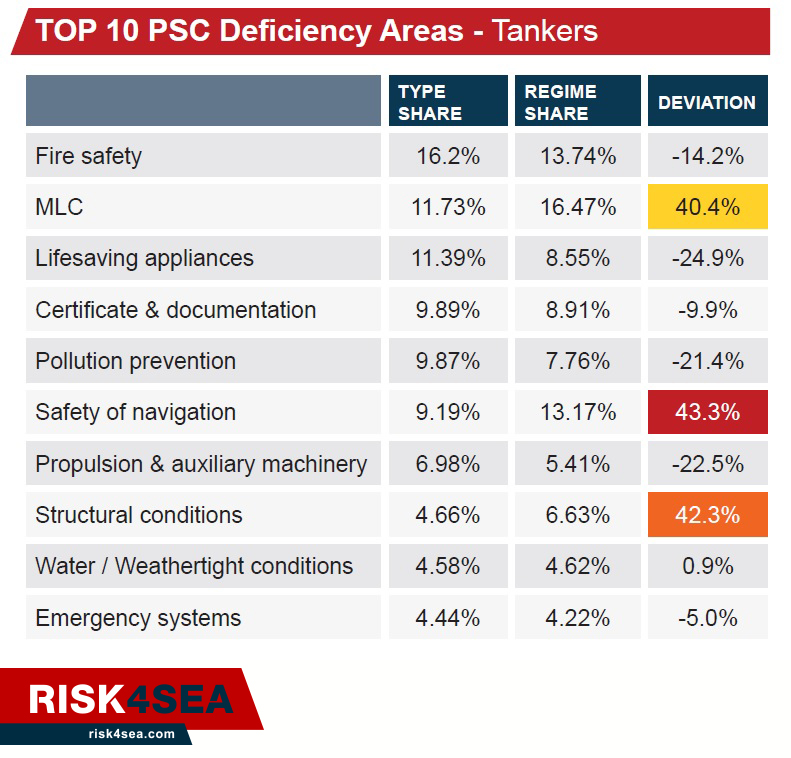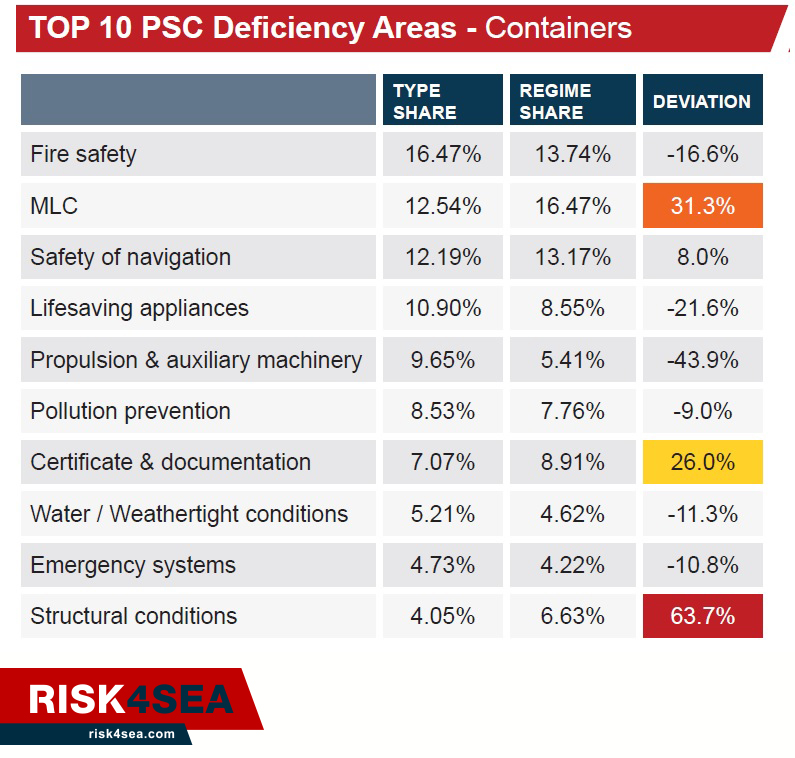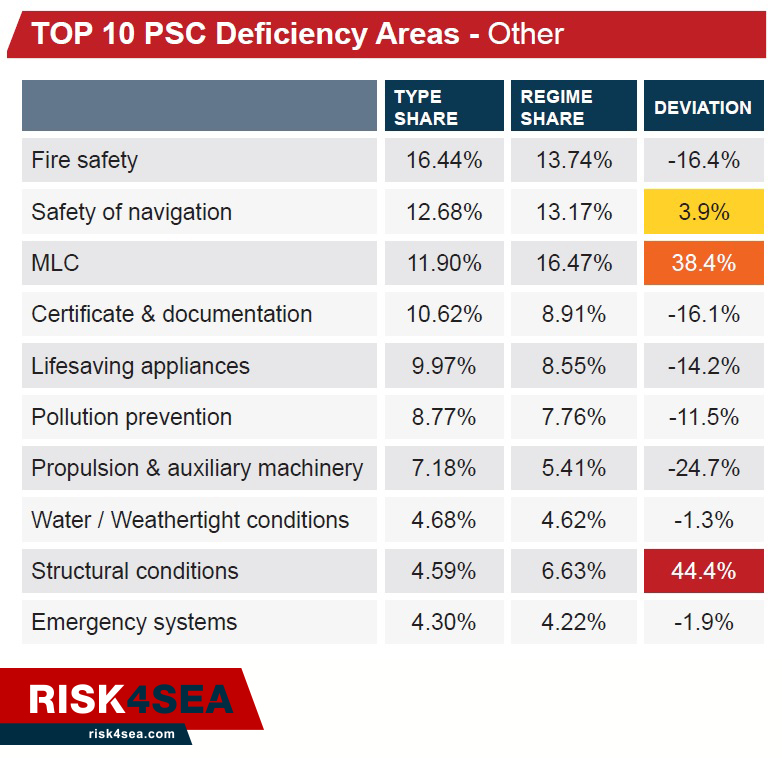Normally, a vessel entering a port is possible to be subject to a PSC inspection. The vessel is assessed through the PSC regime assessment procedure in order to be categorized as high/standard/low risk vessel or Priority I,II, Non Priority for USCG. One of the elements that is taken into consideration is the type of vessel. So why the type of vessel plays key role to determine the performance category of a vessel?
The reason is because different types operate under different standards so the PSC inspection is expected to result in different outcomes.
PSC Deficiency Areas of different vessel types in Paris MoU (2016-2018)
As we may notice, different types have different deficiency areas as most common. For example:
- Tankers do not include safety of navigation in top 5 deficiency areas.
- Bulk carriers and other types have fire safety and safety of navigation as most common deficiency areas.
- MLC as most common area of deficiencies is included in top 3 of all types.
Operators should pay attention to these deficiency areas, in relation to the type of managed vessels, in order to respond to any PSC inspections effectively.
RISK4SEA is an online intelligence platform providing inspection analytics, fleet and ship operator benchmarking. Using these big data analytics an operator may benchmark his ships, fleet and company to industry standards and get a clear insight of his performance gaps and a roadmap to continually improve. Explore more at risk4sea.com


































































